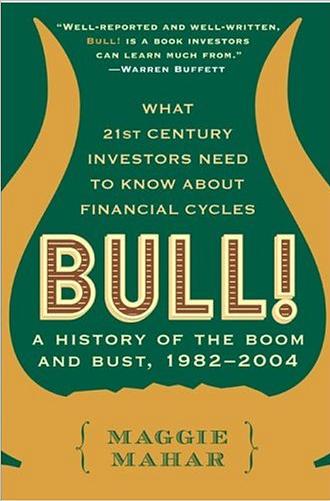The long term secular bull market that stretched from 1982 to 2000 might seem like a distant memory to some investors given the more volatile market from 2001-2010. For much of the nearly two decades equity prices marched steadily higher, with only three speed bumps along the way; 1987’s Black Monday , the 1990-1991 recession and 1998’s Asian Crisis. From 1982 to 2000 the S&P 500, adjusted for inflation, returned 666%.
Maggie Mahar, in her book, Bull: A history of the Boom and Bust, 1982-2004 provides an excellent recount of not only this long term bull, but also how it started and why it ended. The narrative is split into six sections.
- Beginnings (1961-1989)
- The Cast Assembles (1990-1995)
- The Media, Momentum and Mutual Funds (1995-1996)
- The New Economy (1996-1998)
- The Final Run-Up (1998-2000)
- A Final Accounting (2000-2003)
In the investment world valuable lessons can be drawn from studying history. While the future may not replicate the past, Mahar’s work begins with a reminder that bull markets are often preceded by long drawn out bear markets, can last longer than rationally seems possible and may ultimately lead to a large bubble just waiting to be popped.
